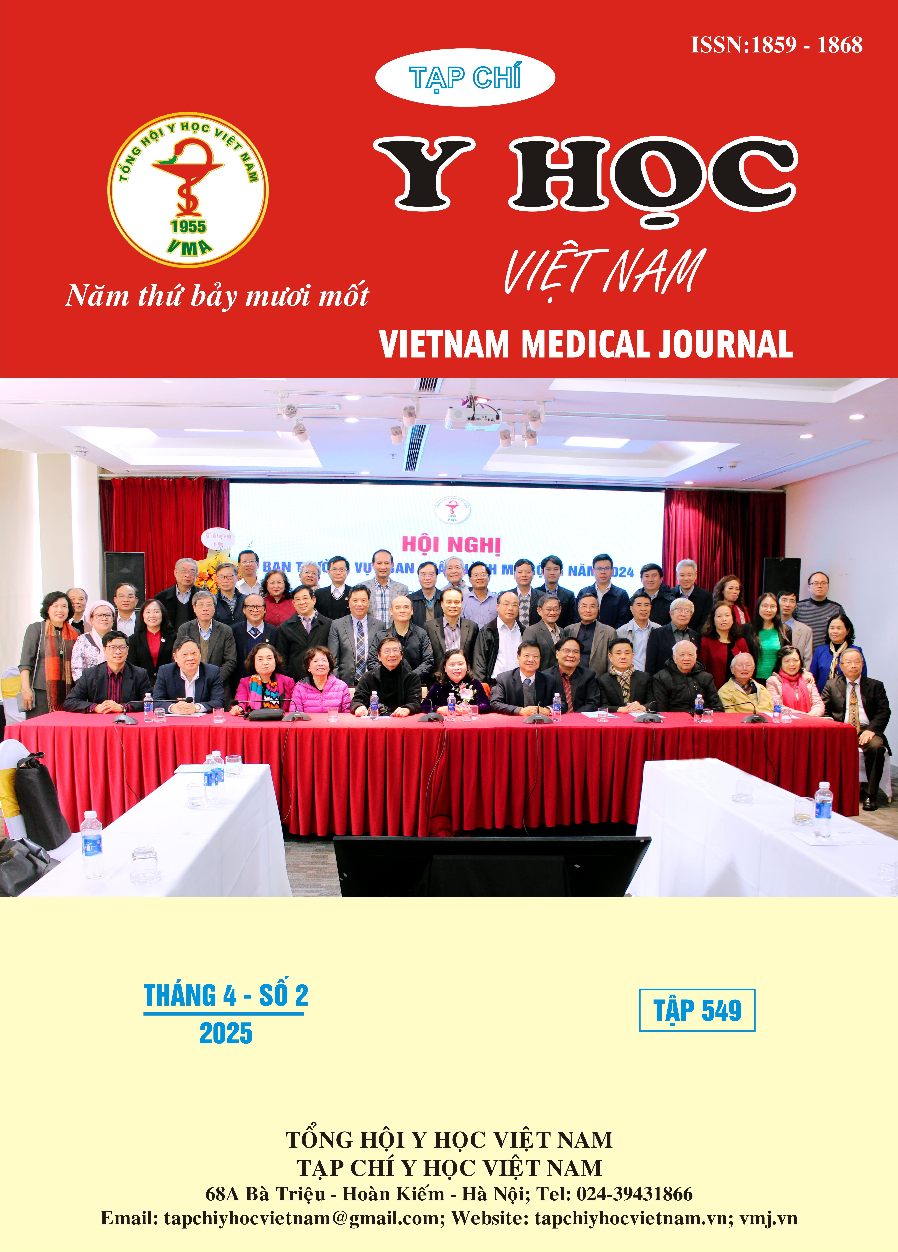EVALUATION OF MORPHOLOGY AND CLASSIFICATION OF INTERTROCHANTERIC FRACTURES USING 3D CT-SCAN AT UNIVERSITY MEDICAL CENTER HO CHI MINH CITY
Main Article Content
Abstract
Introduction: Intertrochanteric fractures are one of the most common types of hip fractures in the elderly. The classification of intertrochanteric fractures is a determining factor for an appropriate treatment strategy. This study aims to evaluate the morphology and number of intertrochanteric fracture fragments of the femur on 3D CT-scan reconstruction according to the Nakano-Shoda (2017) and Wada (2019) classifications. Methods and Materials: A cross-sectional descriptive study was conducted on 47 patients with intertrochanteric fractures who underwent 3D CT-scan from January 2021 to August 2022. Fracture patterns were analyzed using two new CT-based classification systems. Results: According to Nakano-Shoda classification, the most common fracture type was 3-fragment G-L pattern (53.2%), followed by ≥4-fragment pattern (19.2%). Unstable fractures accounted for 76.6% of cases. Based on Wada classification, 4-fragment GP/L was the most prevalent pattern (44.7%). The main mechanisms of instability were isolated posteromedial instability (46.8%) and combined posteromedial and lateral wall instability (21.3%). Several cases classified as stable fractures on X-rays were revealed to be unstable when evaluated with 3D CT-scan. Conclusion: 3D CT-scan enables accurate identification of unstable fractures. Wada classification helps analyze detailed mechanisms of instability, while Nakano-Shoda classification is more practical for clinical application. These findings support the value of 3D CT-scan and new classification systems in evaluating intertrochanteric fractures.
Article Details
Keywords
intertrochanteric fracture, 3D CT-scan, Nakano-Shoda classification, Wada classification
References
- Loại gãy thường gặp nhất là 3 mảnh G-L (53,2%), kế đến là gãy ≥4 mảnh (19,2%)
- Tỷ lệ gãy không vững chiếm đa số (76,6%)
- Một số trường hợp được phân loại gãy vững trên X-quang nhưng thực tế là gãy không vững khi đánh giá trên CT-scan 3D
5.2. Về hình thái gãy xương theo phân loại Wada
- Kiểu gãy phổ biến nhất là 4 mảnh GP/L (44,7%)
- Cơ chế gây mất vững chủ yếu là mất vững thành sau trong đơn thuần (46,8%) và mất vững sau trong kèm mất vững thành ngoài (21,3%)
5.3. Ứng dụng trong thực hành
- CT-scan 3D giúp phát hiện chính xác các trường hợp gãy không vững
- Phân loại Wada giúp phân tích chi tiết hơn về cơ chế mất vững, hữu ích trong lập kế hoạch điều trị
- Phân loại Nakano-Shoda đơn giản và thực tế hơn trong ứng dụng lâm sàng hàng ngày
Kết quả nghiên cứu này góp phần cung cấp thêm bằng chứng về giá trị của CT-scan 3D và các bảng phân loại mới trong đánh giá gãy liên mấu chuyển xương đùi.
TÀI LIỆU THAM KHẢO
1. Tawari AA, et al. What makes an intertrochanteric fracture unstable in 2015? J Orthop Trauma. 2015;29:S4-S9.
2. Kellam JF, et al. Fracture and Dislocation Classification Compendium-2018. J Orthop Trauma. 2018;32.
3. Shoda E, Kitada S, Sasaki Y, et al. Proposal of new classification of femoral trochanteric fracture by three-dimensional computed tomography and relationship to usual plain X-ray classification. J Orthop Surg (Hong Kong). 2017;25(1): 2309499017692700.
4. Nakano T. Proximal femoral fracture. Seikeigeka. 2014;65:842-850.
5. Wada K, et al. A novel three-dimensional classification system for intertrochanteric fractures based on computed tomography findings. J Med Invest. 2019;66:362-366.
6. Abdullah MES. The role of preoperative computed tomography in surgical planning of intertrochanteric femur fractures fixation. Int J Res Orthop. 2021;7(2):211.
7. Cho JW, Kent WT, Yoon YC, et al. Fracture morphology of AO/OTA 31-A trochanteric fractures: A 3D CT study with an emphasis on coronal fragments. Injury. 2017;48(2):277-284.
8. Sharma G, Gn KK, Khatri K, et al. Morphology of the posteromedial fragment in pertrochanteric fractures: A three-dimensional computed tomography analysis. Injury. 2017;48(2):419-431.
9. Han SK, Lee BY, Kim YS, et al. Usefulness of multi-detector CT in Boyd-Griffin type 2 intertrochanteric fractures with clinical correlation. Skeletal Radiol. 2012;39(6):543-9.
10. Li M, Li ZR, Li JT, et al. Three-dimensional mapping of intertrochanteric fracture lines. Chin Med J (Engl). 2019;132(21):2524-2533.


